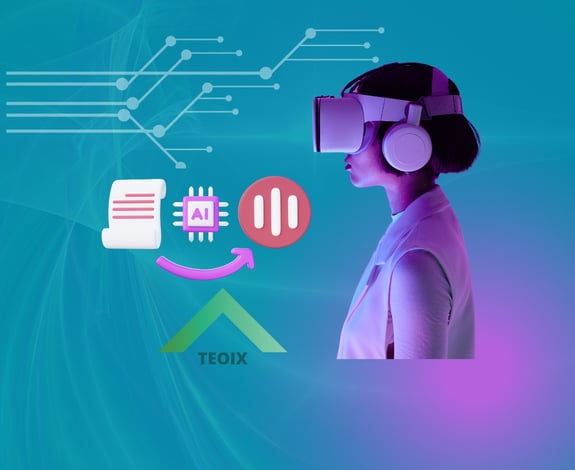The Evolution of Speech Recognition in AI: From Sci-Fi Dream to Everyday Reality
ARTIFICIAL INTELLIGENCE
5/4/20242 min read


Thanks to developments in artificial intelligence (AI), speech recognition—once limited to science fiction books and popular films—has become a smooth part of daily life. With the use of this technology, which makes it possible for machines to comprehend and interpret human speech, a number of industries have experienced revolutionary changes, and user experiences have improved globally.
The development of AI speech recognition may be dated to the middle of the 20th century, when researchers started looking into the feasibility of teaching robots to comprehend human language. The first attempts were crude, accurate, and had a small vocabulary. Significant improvement was made, nevertheless, as processing power and algorithm sophistication rose.
The creation of Hidden Markov Models (HMMs) in the 1970s marked a turning point in the history of voice recognition. This statistical approach made it possible to identify patterns in audio data, which set the groundwork for many contemporary speech recognition systems. In spite of these drawbacks, HMMs were a big advancement in the field.
The true breakthrough was made possible by deep learning techniques, especially deep neural networks (DNNs), which emerged in the twenty-first century. Researchers were able to train neural networks to extract high-level features from audio signals, resulting in exceptional accuracy in speech recognition tasks, by utilizing large volumes of labeled data and significant computational resources.
Virtual assistants like as Apple's Siri, Amazon's Alexa, and Google Assistant are powered by speech recognition technology today, which enables users to communicate with their gadgets using natural language instructions. These virtual assistants are capable of doing a lot of different things, like sending messages and setting reminders, managing smart home appliances, and making tailored recommendations.
Speech recognition has been used in a number of fields besides consumer applications, such as healthcare, finance, and customer service. Speech recognition technology, for example, makes it possible for doctors to dictate patient notes more effectively in the healthcare industry, enhancing productivity and lowering administrative load. These technologies are used in finance to real-time analyze market patterns and to transcribe financial calls.
But even with its impressive advancements, voice recognition technology still has a number of problems. Accuracy can be impacted by accents, background noise, and different speaking styles, especially when speakers have non-standard speech patterns or are in busy situations. In addition, worries over data security and privacy have sparked debate over the moral ramifications of mass adoption.
In terms of AI speech recognition, the future seems bright. The capabilities of voice recognition systems will be significantly enhanced by ongoing developments in deep learning, as well as the spread of 5G networks and IoT devices. Speech-enabled AI has the potential to completely change how humans engage with technology and one another in a variety of contexts, including healthcare, education, smart homes, and driverless cars. AI's transformational capacity is demonstrated by speech recognition, which further blurs the lines between humans and robots.


